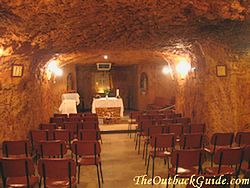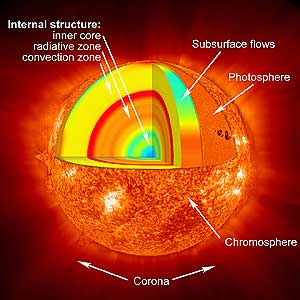People all over the world live in caves. I am not talking about subsistence living either. Downtown Minneapolis is pretty much underground or connected by underground walkways.
http://en.wikipedia.org/wiki/Underground_City,_Montreal
Montreal’s Underground City (officially RÉSO or La Ville Souterraine in French) is the set of interconnected complexes (both above and below ground) in and around Downtown Montreal, Quebec, Canada. It is also known as the indoor city (ville intérieure), and is the largest underground complex in the world.[1]

The lower floors of the Eaton Centre between the McGill and Peel metro stations.
Not all portions of the indoor city (ville intérieure) are underground. The connections are considered tunnels architecturally and technically, but have conditioned air and good lighting as any building’s liveable space does. Many tunnels are large enough to have shops on both sides of the passage. With over 32 km (20 mi) of tunnels spread over more than 12 km2 (4.6 sq mi), connected areas include shopping malls, apartment buildings, hotels, condominiums, banks, offices, museums, universities, seven metro stations, two commuter train stations, a regional bus terminal and the Bell Centre amphitheatre and arena.[citation needed] There are more than 120 exterior access points to the underground city. Each access point is an entry point to one of 60 residential or commercial complexes comprising 3.6 km2 (1.4 sq mi) of floor space, including 80% of all office space and 35% of all commercial space in downtown Montreal.[citation needed] In winter, some 500,000 people use the underground city every day. Because of its Underground City, Montreal is often referred to [by whom?] as the “Double-Decker City” or “Two Cities in One”.
:}
OK so it is really really cold in Montreal. The point is caves do not really need heating and cooling. Hot water can be supplied by solar or geothermal and that just leaves your electrical needs. They also do it where it is really really hot.
http://en.wikipedia.org/wiki/Coober_Pedy
Coober Pedy is a very small town, roughly halfway between Adelaide and Alice Springs, that has become a popular stopover point and tourist destination, especially since the completion of the sealing of the Stuart Highway in 1987.
Interesting attractions in Coober Pedy include the mines, the graveyard, and the underground churches. The first tree ever seen in the town was welded together from scrap iron. It still sits on a hilltop overlooking the town. The local golf course – mostly played at night with glowing balls, to avoid daytime temperatures – is completely free of grass, and golfers take a small piece of “turf” around to use for teeing off. As a result of correspondence between the two clubs, the Coober Pedy golf club is the only club in the world to enjoy reciprocal rights at The Royal and Ancient Golf Club of St Andrews.[4]
:}
http://www.outback-australia-travel-secrets.com/coober-pedy-underground-homes.html
Coober Pedy Underground Homes
Think A Dugout Is A Hole In The Ground? Think Again!
Coober Pedy underground homes are not what you expect.
The idea of living underground usually triggers thoughts of dark, damp and cramped spaces.
It doesn’t help that those underground homes are called “dugouts” in Coober Pedy… Or that people are told that they are abandoned mine shafts…
But as I said, Coober Pedy dugouts are not what you think.
You really have to go and have a look at some of those homes yourself, or stay in underground accommodation in Coober Pedy. You’ll probably end up dreaming of an underground home yourself. I certainly did.
Historic Coober Pedy Dugouts | Modern Coober Pedy Underground Homes
Historic Coober Pedy Dugouts

The early Coober Pedy dugouts were indeed the holes that had been dug in search for opal.
Back then opal mining was back breaking manual labour, so the earliest Coober Pedy homes were no bigger than they absolutely needed to be.
:}
Tomorrow more on Energy Neutral Houses.
:}


























